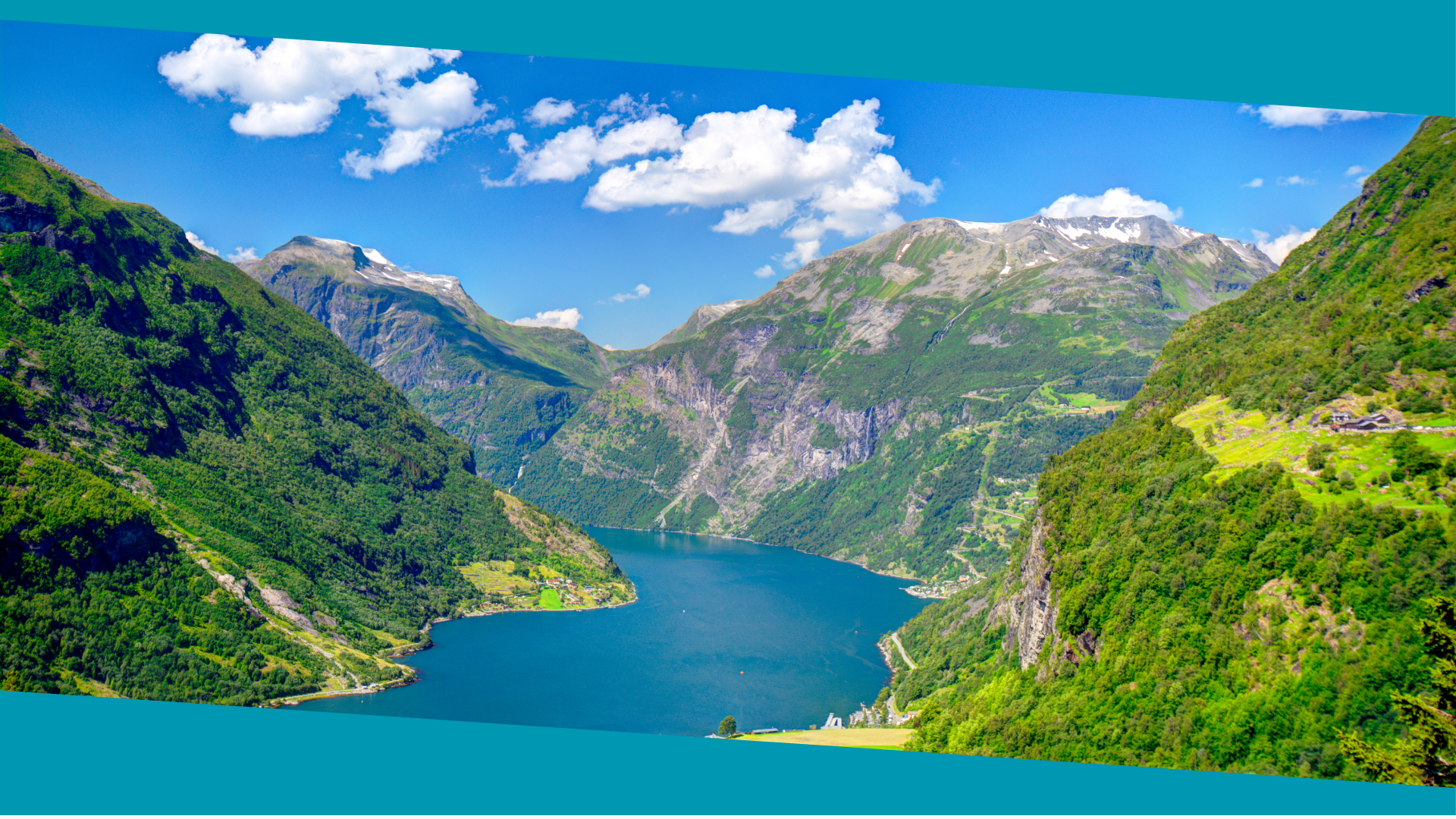

Navigating Norwegian: 20 Key Verbs for Travelers
When traveling to Norway, it is important to have a basic understanding of Norwegian verbs in order to communicate effectively with locals. Norwegian verbs are an essential part of the language and knowing how to use them correctly will greatly enhance your travel experience. In this article, we will provide a comprehensive guide to Norwegian verbs for travelers, covering everything from greetings and introductions to ordering food and drinks, shopping, asking for directions, discussing activities and sightseeing, and more.
Norwegian verbs follow a similar structure to other Germanic languages, such as English and German. They are conjugated based on tense, mood, and subject, and can be regular or irregular. Regular verbs follow a predictable pattern when conjugated, while irregular verbs have unique conjugations that must be memorized. It is important to note that Norwegian has two written forms – Bokmål and Nynorsk – but the verb conjugations are the same in both forms.
Table of Contents
ToggleKey Takeaways
- Norwegian verbs are essential for basic communication while traveling in Norway.
- Essential verbs for basic communication include “å være” (to be), “å ha” (to have), and “å snakke” (to speak).
- Navigating transportation requires knowledge of verbs such as “å ta” (to take) and “å gå” (to walk).
- Ordering food and drinks in Norwegian requires verbs such as “å bestille” (to order) and “å drikke” (to drink).
- Shopping and bargaining in Norwegian requires verbs such as “å kjøpe” (to buy) and “å prute” (to bargain).
Essential Verbs for Basic Communication in Norway
When visiting Norway, it is essential to know some basic verbs for greetings and introductions. Common verbs for greetings include “hei” (hello), “god morgen” (good morning), “god dag” (good day), “god kveld” (good evening), and “ha det bra” (goodbye). Introducing yourself can be done with the verb “heter” (to be called) followed by your name. For example, “Jeg heter [your name]” means “My name is [your name]”.
Expressing gratitude and apologies is also important when interacting with locals. The verb “takk” (thank you) is used to express gratitude, while “unnskyld” (excuse me) or “beklager” (sorry) can be used to apologize. It is considered polite to use these phrases when appropriate.
Basic verbs for asking and answering questions are also essential for communication. The verb “kan” (can) is used to ask if someone can do something, while “vet” (know) is used to ask if someone knows something. To answer these questions, you can use “ja” (yes) or “nei” (no) followed by the verb.
Navigating Transportation with Norwegian Verbs
When traveling in Norway, it is important to know how to navigate transportation using Norwegian verbs. Verbs for using public transportation include “ta” (take), “gå” (go), and “komme” (come). For example, “Jeg tar bussen til sentrum” means “I take the bus to the city center”.
Phrases for asking for directions and understanding transportation schedules are also useful. The verb “finne” (find) can be used to ask for directions, while “forstå” (understand) can be used to ask if someone understands something. To understand transportation schedules, you can use the verb “lese” (read). For example, “Kan du hjelpe meg å finne veien?” means “Can you help me find the way?”.
Vocabulary for renting a car or bike in Norway is also important. The verb “leie” (rent) is used when renting a car or bike. For example, “Jeg vil leie en sykkel” means “I want to rent a bike”. It is also useful to know vocabulary related to car parts and bike accessories when renting.
Ordering Food and Drinks in Norwegian
When dining out in Norway, it is helpful to know common verbs for ordering food and drinks in restaurants and cafes. The verb “bestille” (order) is used when placing an order. For example, “Jeg vil bestille en pizza” means “I want to order a pizza”. Other useful verbs include “spise” (eat) and “drikke” (drink).
Vocabulary for dietary restrictions and preferences is also important when ordering food and drinks. For example, if you are vegetarian, you can say “Jeg er vegetarianer” (I am a vegetarian). If you have any allergies, it is important to communicate them to the server using phrases such as “Jeg er allergisk mot [allergen]” (I am allergic to [allergen]).
Phrases for paying the bill and leaving a tip are also useful to know. The verb “betale” (pay) is used when paying the bill. For example, “Kan jeg betale med kort?” means “Can I pay with card?”. In Norway, tipping is not mandatory, but it is common to leave a small tip if you are satisfied with the service.
Shopping and Bargaining in Norwegian
When shopping in markets and stores in Norway, it is helpful to know verbs for shopping and bargaining. The verb “handle” (shop) is used when shopping for goods. For example, “Jeg vil handle klær” means “I want to shop for clothes”. Other useful verbs include “kjøpe” (buy) and “selge” (sell).
Vocabulary for clothing and souvenir shopping is also important. It is useful to know words for different types of clothing, such as “skjorte” (shirt), “bukse” (pants), and “genser” (sweater). When shopping for souvenirs, it is helpful to know words for traditional Norwegian items, such as “bunad” (traditional costume) and “troll” (troll figurine).
Tips for negotiating prices in Norway can also be helpful. While bargaining is not common in Norway, it is possible to negotiate prices in certain situations, such as at flea markets or when buying antiques. It is important to be polite and respectful when negotiating, and to have an idea of the fair market value of the item you are interested in.
Asking for Directions in Norwegian
When navigating Norwegian cities and towns, it is important to know essential verbs and phrases for asking for directions. The verb “spørre” (ask) is used when asking for directions. For example, “Kan jeg spørre deg om veien?” means “Can I ask you for directions?”. Other useful verbs include “gå” (go), “snu” (turn), and “fortsette” (continue).
Vocabulary for understanding street signs and maps is also important. It is useful to know words for common street signs, such as “vei” (road), “gate” (street), and “skilt” (sign). When using a map, it is helpful to know words for landmarks and points of interest, such as “kirke” (church) and “museum” (museum).
Tips for navigating Norwegian cities and towns can also be helpful. Norway has a well-developed public transportation system, so it is often easier to use public transportation rather than driving. It is also helpful to have a map or GPS device with you, as well as a local SIM card for your phone to access internet services.
Talking about Accommodation in Norwegian
When booking and checking into hotels and hostels in Norway, it is important to know verbs for accommodation. The verb “bestille” (book) is used when booking a room. For example, “Jeg vil bestille et rom” means “I want to book a room”. Other useful verbs include “sjekke inn” (check in) and “sjekke ut” (check out).
Vocabulary for describing different types of accommodation is also important. It is useful to know words for different types of rooms, such as “enkeltrom” (single room), “dobbeltrom” (double room), and “familierom” (family room). When booking, it is also helpful to know words for amenities, such as “wifi” (wifi) and “frokost” (breakfast).
Phrases for expressing concerns or complaints about accommodations can also be useful. If you have any issues with your room, it is important to communicate them to the front desk using phrases such as “Jeg har et problem med rommet” (I have a problem with the room). It is also helpful to know words for common issues, such as “varmt vann” (hot water) and “air condition” (air conditioning).
Expressing Preferences and Desires in Norwegian
When expressing likes and dislikes in Norway, it is helpful to know verbs for preferences and desires. The verb “like” (like) is used when expressing likes. For example, “Jeg liker å gå på tur” means “I like to go hiking”. Other useful verbs include “elske” (love) and “foretrekke” (prefer).
Vocabulary for describing activities and experiences is also important. It is useful to know words for different types of activities, such as “svømming” (swimming), “fottur” (hiking), and “museumsbesøk” (museum visit). When describing experiences, it is helpful to know words for adjectives, such as “fantastisk” (fantastic), “spennende” (exciting), and “kjedelig” (boring).
Phrases for making plans and suggestions can also be useful. If you want to make plans with someone, you can use phrases such as “Vil du være med på [activity]?” (Do you want to join [activity]?). If you want to suggest something, you can use phrases such as “Hva med å [activity]?” (What about [activity]?).
Discussing Activities and Sightseeing in Norwegian
When discussing activities and sightseeing options in Norway, it is helpful to know verbs for discussing these topics. The verb “snakke” (talk) is used when discussing activities and sightseeing options. For example, “Vi kan snakke om hva vi skal gjøre i dag” means “We can talk about what we are going to do today”. Other useful verbs include “besøke” (visit) and “utforske” (explore).
Vocabulary for outdoor activities and cultural experiences is also important. Norway is known for its beautiful nature, so it is useful to know words for outdoor activities, such as “fjelltur” (mountain hike), “fisking” (fishing), and “sykling” (cycling). When visiting cultural sites, it is helpful to know words for different types of attractions, such as “slott” (castle) and “museum” (museum).
Tips for finding unique and off-the-beaten-path experiences in Norway can also be helpful. While popular tourist attractions are worth visiting, it is also worth exploring lesser-known places to get a more authentic experience. Local recommendations, online travel forums, and guidebooks can be great resources for finding unique experiences.
Useful Phrases and Tips for Using Norwegian Verbs on Your Travels
In addition to the specific verbs and phrases mentioned in the previous sections, there are some general phrases that can be useful in everyday situations when using Norwegian verbs. These include:
– “Kan du snakke engelsk?” (Can you speak English?) – This phrase can be helpful if you are having difficulty communicating in Norwegian and need to switch to English.
– “Kan du gjenta det?” (Can you repeat that?) – This phrase can be used if you didn’t understand something and need the person to repeat it.
– “Kan du hjelpe meg?” (Can you help me?) – This phrase can be used if you need assistance with something.
– “Jeg forstår ikke” (I don’t understand) – This phrase can be used if you are having difficulty understanding what someone is saying.
Tips for practicing and improving your Norwegian language skills include:
– Practice speaking with locals whenever possible. Even if you make mistakes, most Norwegians appreciate the effort and will be happy to help you improve.
– Use language learning apps or websites to practice vocabulary and verb conjugations.
– Watch Norwegian movies or TV shows with subtitles to improve your listening skills.
– Carry a pocket-sized Norwegian phrasebook with you for quick reference.
Resources for further learning and practicing Norwegian verbs include:
– Online language learning platforms, such as Duolingo or Babbel, which offer Norwegian courses.
– Language exchange websites, where you can find language partners to practice speaking with.
– Language schools or institutes that offer Norwegian classes or immersion programs.
– Online forums or communities dedicated to learning Norwegian, where you can ask questions and get advice from fellow learners.
In conclusion, learning Norwegian verbs is essential for travelers visiting Norway. By knowing basic verbs for greetings, ordering food, asking for directions, discussing activities, and more, travelers can enhance their communication skills and have a more immersive travel experience. With the tips and resources provided in this article, travelers can practice and improve their Norwegian language skills before and during their trip to Norway.

Norwegian A1-A2
Course Overview The Norwegian A1-A2 course is an online program focused on teaching essential Norwegian grammar and vocabulary. It includes a variety of materials and topics, with opportunities to interact with a Norwegian teacher entirely online. Curriculum Highlights The course covers key areas such as grammar and vocabulary and topics such as family, daily life, education, work, traditions, and leisure activities. Who Should Enroll? This course is perfect for beginners or those at the A1 or A2 levels who want to improve their Norwegian skills. What You Get Access to the full Norwegian A1-A2 course. A monthly 1-hour online conversation with a teacher. Many written and oral assignments. Comprehensive information on Norwegian grammar, Norwegian vocabulary and how to use them, important sentence structures, etc. Tips on additional resources to further enhance your Norwegian learning.
0 students enrolled
Last updated Dec 10th, 2024
If you want to learn Norwegian, you can register for classes here. We look forward to hearing from you and helping you become fluent in Norwegian.






